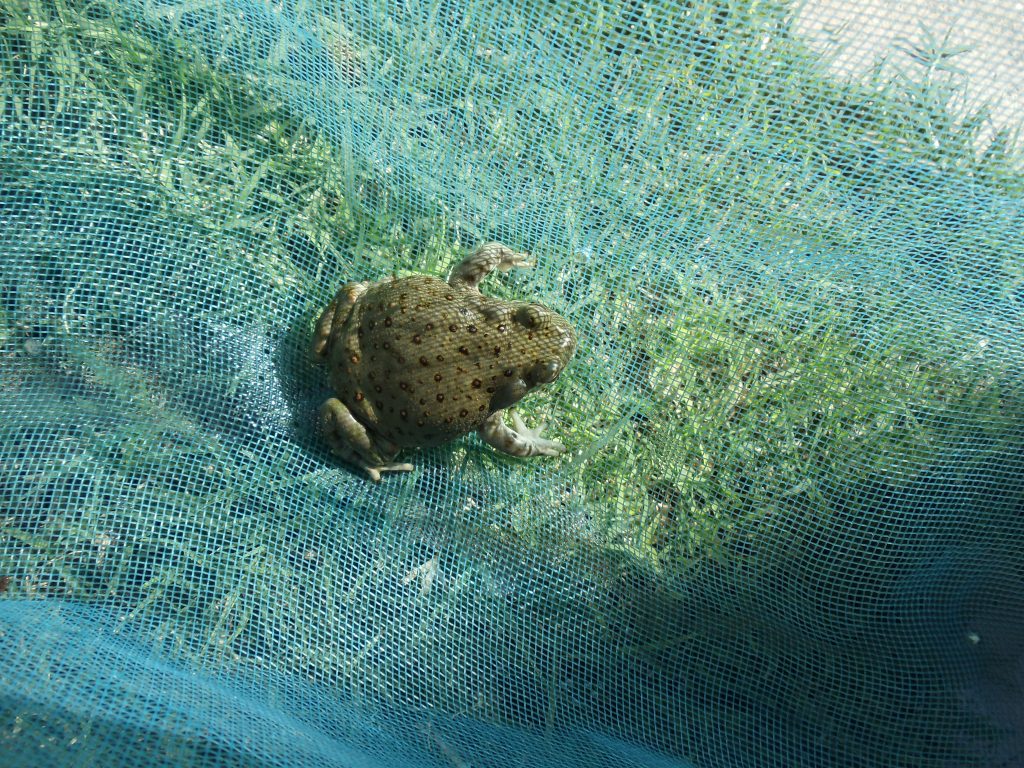
The Colorado River toad, also commonly known as the Sonoran Desert toad, strikes fear in many Arizona residents around the valley and here’s why:
As we are slowly transitioning into summer, the desert toad’s breeding season begins, making their presence on your property much more likely. These toads are extremely poisonous and hazardous to children, pets, and even adults. They secrete a toxin called bufotenin from various glands within their skin. Bufotenin belongs to the hallucinogenic tryptamines family meaning if introduced to the body, the affected victim would experience strong visual and auditory hallucinations before facing possible death.
Adults and children may be educated on the matter, but safety for our beloved pets still remain an issue. There have been many reports of full size dogs attacking these toads that have been paralyzed and even killed from the interaction. In this blog, we’ll discuss all the necessary information you need to protect you and your family.
If you have any questions at all about the Colorado River toad, please do not hesitate to contact us here at Desert Termites. As stated in the previous blog, we are all pet owners here and truly care about all our furry companions!
What do the Colorado River toads look like?
These toads are the largest native species of toads found in the U.S., growing up to 7.5” in length. They are described as having smooth leather-like skin ranging from an olive green to a medium brown in color with multiple dark spots on their back. They can be characterized by their large prominent parotid glands located behind the eyes and the distinct white wart at the corner of their mouths.
What is their habitat and behavior?
The Sonoran Desert toad is found in the southwestern states, including the southern eastern section of California, New Mexico, and Arizona. They are semi aquatic meaning they are often found near streams, ponds, canals, drainage areas, irrigation systems etc. However, they are well known to breed in man made bodies of water such as reservoirs, artificial lakes and ponds, which in turn bring them into urbanized areas.
Breeding usually begins around May and typically ends in August. The toads lay their eggs mainly after rainfall in the described bodies of water. A female can lay up to 8,000 eggs, which will produce tadpoles in about a month’s time.
How does their poison work?
The Sonoran Desert toad’s poison contains Bufotenin, which is a hallucinogenic serotonin analog that binds to certain receptors in the brain. When ingested, it can cause strong visual and auditory hallucinations as well as a number of other signs and symptoms. Including:
- Confusion
- Unstable movement
- Excess salivation
- Color change of oral membranes
- Difficulty breathing
- Fever
- Seizures
What can I do to protect my home and family?
The first step in protecting your family and pets from the Sonoran Desert toads is to secure your home’s yard. It is important to block all entry points into your back yard. For example, water drain outlets in fences can be blocked with mesh wiring and cracks in the fence line sealed. Rubber may also be installed under side gates to increase security. The next step is to reduce ideal conditions that may be attractive, for example eliminating standing water and keeping water in pools, ponds, and fountains clean. Restricting their food sources also helps, which means running a regular pest control schedule for not only insects, but small lizards and rodents as well. The last step and probably the most important is knowledge. You must understand the Sonoran Desert toad’s biology, habitat, and behavior to fully protect your loved ones.
What should I do if I suspect my pet has been poisoned?
If you suspect that your pet has encountered one of these poisonous toads, it is imperative that they receive medical attention right away. They should be taken to the nearest veterinary hospital or clinic as soon as possible since this is a time dependent emergency. If at all possible, it is important to irrigate your pet’s mouth with water in order to flush out any remaining toxins.
Hopefully we were able to share some valuable information about the Colorado River toads. If you have any questions at all, do not hesitate to contact us at Desert Termites! We’ll be happy to help you in any way we can!


